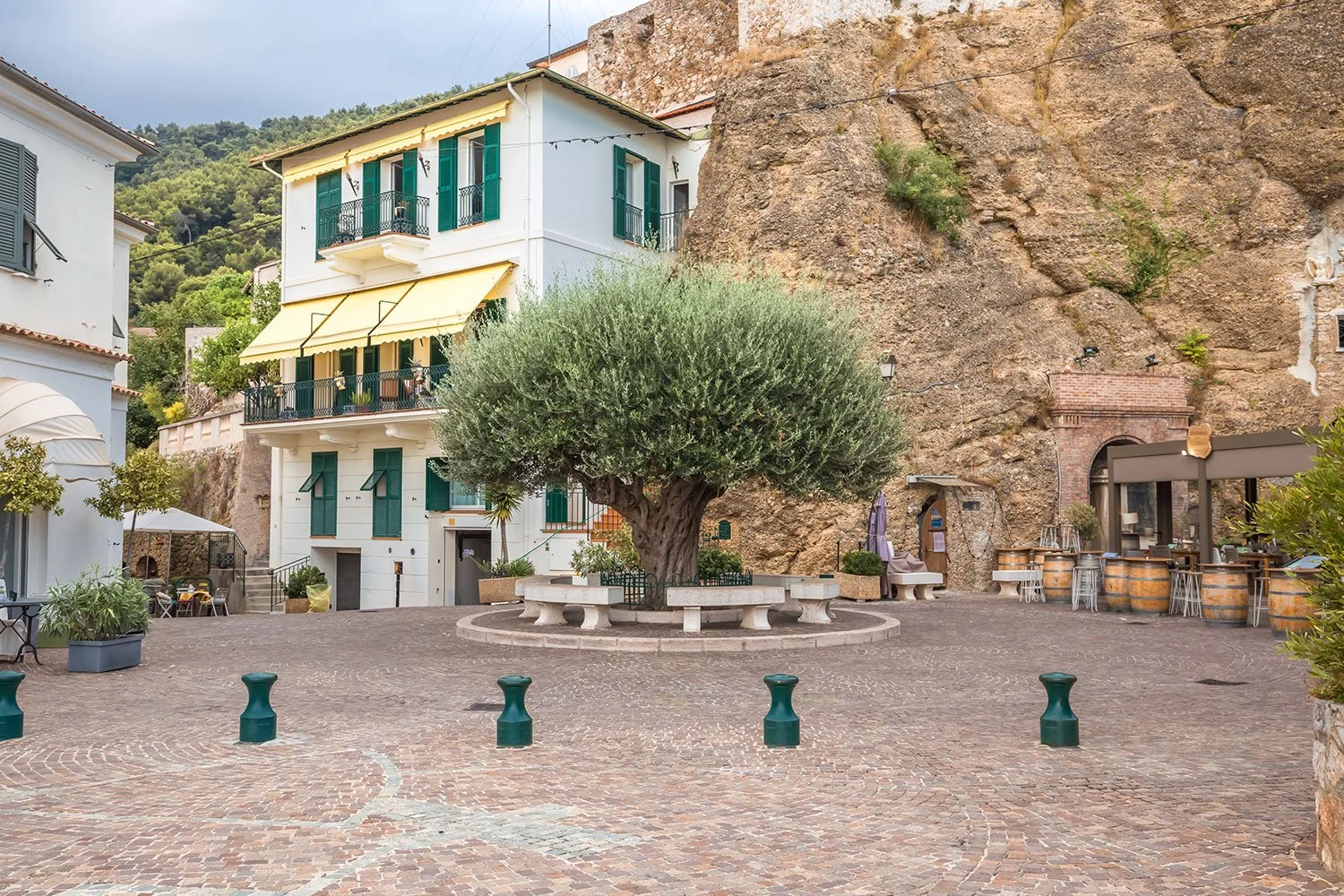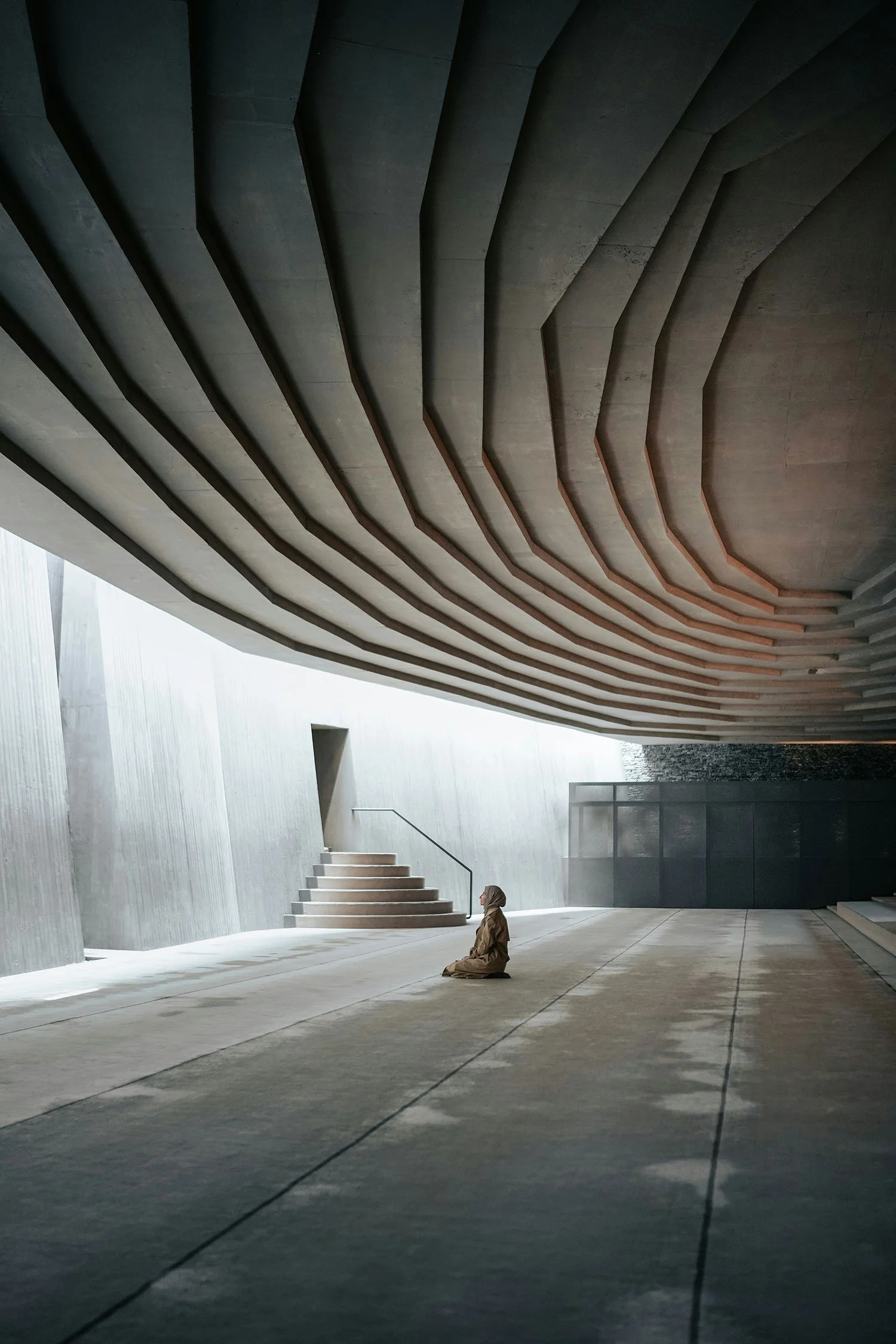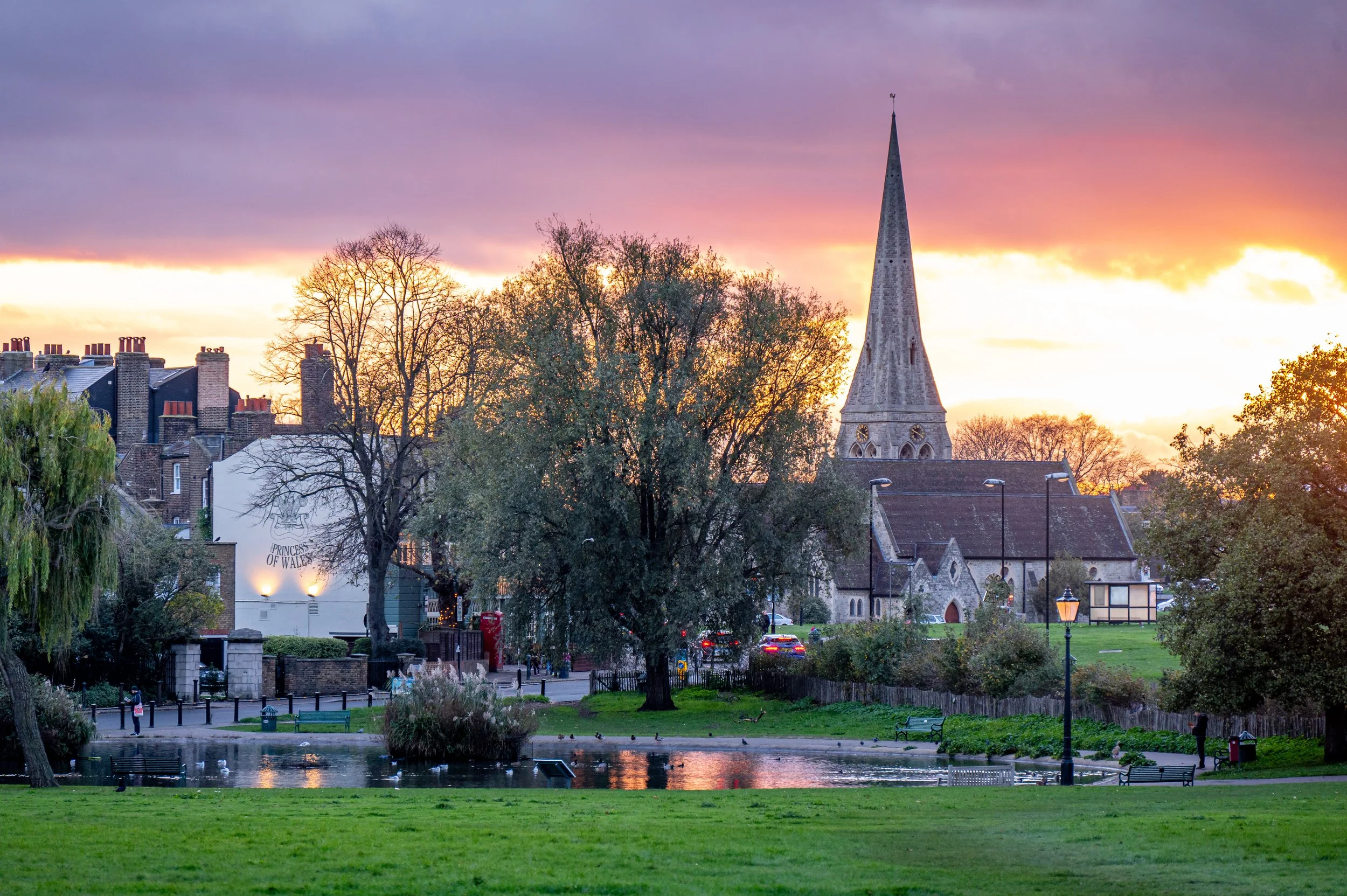When we think about design, it’s often dismissed as a veneer - something superficial, a final flourish to make things “look nice.” But design is far more than that. It’s not just about what we see; it’s about what we feel. It’s about the unspoken language of spaces that whispers to us when we walk into a room or turn the corner of a street. Design, at its core, is about shaping how we live, connect, and thrive.
Ask yourself this: why do some spaces feel alive while others feel empty? Why does one street draw you in, while another pushes you away? It’s not magic. It’s design - a profound force that weaves together function, emotion, and purpose. And yet, we often relegate it to the sidelines, treating it as a luxury rather than a necessity.
In my spare time and mainly for escapist reasons to give my mind a break from more exhausting tasks, I’ve immersed myself in the world of design - looking at it, enjoying it and renovating and transforming spaces. And if there’s one thing I’ve learned, it’s this: design isn’t just about aesthetics. It’s about creating experiences. It’s about crafting environments that make us feel something - joy, comfort, inspiration, or even a quiet sense of belonging.
Design isn’t just a decoration. It’s a way of life. And once we start to see it that way, the possibilities become endless.
The True Purpose of Design
Design isn’t just about filling a space, it’s about giving it meaning. It’s about creating an environment that resonates with who we are and what we need, even if we don’t consciously realize it. A well-designed space doesn’t just look good: It works, it supports, it soothes, it inspires. It becomes a silent partner in our lives, shaping how we feel and function - often without us even noticing.
For instance, when staging a house for sale, it’s not just about making it look attractive - it’s about seduction. The design must do more than simply appear neutral or blank. It should evoke a lifestyle that potential buyers yearn for. Contrary to the common advice to keep staging impersonal, I believe it’s about creating a vision of the life they could live. A well-designed space can spark an emotional connection that makes a potential buyer think and feel, this is where I belong. It’s a delicate balance between artistry and psychology.
There’s also a growing body of research that supports the idea that design has a profound impact on our health and well-being. Studies have shown that environments incorporating natural light, greenery, and organic materials can reduce stress levels, boost mood, and even promote healing. In hospitals, for instance, patients in rooms with a view of nature recover faster than those without. This aligns with the principles of biophilic design, which focuses on bringing the natural world into our interiors to enhance not just aesthetics but also mental and physical health.
A tranquil hospital room designed with biophilic principles: Incorporating natural light, greenery, and organic textures to enhance patient well-being, reduce stress, and promote healing through a harmonious connection to nature.
Design has the power to change how we perceive ourselves and our surroundings. Imagine walking into a space that makes you feel instantly lighter, calmer, or even more inspired. That’s not a coincidence - it’s the result of intentional choices. It might be the way a chair is angled toward the light, inviting you to sit and linger. Or the way textures - soft wool against cool stone - create a sensory balance that feels just right.
A serene corner of minimalist design: Natural light, clean lines, and greenery combine to create a harmonious space that fosters both relaxation and connection to nature.
And it’s not just about interiors. Urban design can do the same on a larger scale. Urban spaces, thoughtfully designed with human interaction and comfort in mind, can transform the way we live together. A well-placed park, a beautifully designed public square, or even the careful alignment of streets and buildings can foster a sense of community, encourage social connections, and promote overall happiness.
A public square where design meets community: the central olive tree offers shade and connection, while thoughtful details encourage gathering and social interaction.
At its core, design reflects our values. It’s a mirror of what we prioritize - community or isolation, comfort or coldness, timelessness or trends. When done thoughtfully, it becomes a celebration of life itself. And when done poorly, it leaves us disconnected, disoriented, and dissatisfied.
So, why settle for design that merely decorates? Why not demand design that transforms, that uplifts, that resonates? The true purpose of design isn’t just to be seen - it’s to be felt.
Design as a sanctuary: this space reminds us that urban design, when thoughtfully crafted, can inspire quiet reflection and create a profound connection between people and their surroundings.
Beyond Aesthetics—How Design Shapes Our Lives
Design isn’t just about what we see - it’s about how we feel, how we connect, and how we live. A well-designed space shapes more than its appearance; it shapes the very fabric of our daily lives. As explained, it’s not merely a question of aesthetics - it’s about creating places that anchor us, where past and present collide in meaningful ways, giving us a sense of continuity and belonging.
A good example is Blackheath Village in London. I lived in Blackheath for more than 10 years. Its charm doesn’t rely on flashy modernity or sprawling urban developments. It’s in the details - the preserved Victorian facades, the tree-lined streets, the understated elegance of a community that has resisted the temptation to chase the trend for growth and density. The Heath, with its sweeping green expanses, isn’t just a park - it’s a cultural cornerstone, a place where generations have gathered, walked, and connected. Blackheath respects its history, and in doing so, it creates a community that feels grounded and timeless.
London Blackheath Village, at sunset - a timeless blend of natural beauty and architectural charm. The Victorian facades, tranquil park, and iconic church spire evoke a sense of continuity and community in this historic London neighbourhood.
Every time I think of Blackheath, my heart aches with a quiet longing. It’s proof that thoughtful design isn’t just visual - it’s emotional. The continuity of its architecture tells a story, one that ties its current residents to those who came before them. It fosters a sense of stability, an intangible but vital quality that’s increasingly rare in today’s transient urban environments.
The church in Blackheath - beautiful, timeless, and at the heart of the community.
Now contrast this with Luxembourg, where village centers are being torn apart in the name of progress. Quaint, storied homes are replaced with sterile apartment blocks that could exist in any city, anywhere. The trend leans heavily on a minimalist, Bauhaus-inspired aesthetic - sleek, efficient, and utterly devoid of soul. What’s lost is more than just architectural detail; it’s the emotional fabric that holds communities together. These new developments feel cold, disconnected, and temporary - mere placeholders in a landscape that once carried meaning.
Sterile apartment blocks like this, with their minimalist Bauhaus-inspired aesthetic, symbolize the loss of community and character in Luxembourg's evolving village centers - a stark reminder of progress at the cost of emotional and architectural heritage.
The erosion of these old structures erases more than history - it erases identity. The creaking beams, the worn stone steps, the quirks and imperfections that gave these places character - they’re all gone. And what remains? Uniformity. Homogeneity. A blank slate where the past has been scrubbed away in favour of convenience.
It’s tempting to dismiss this as sentimental nostalgia, but science supports the emotional power of well-designed spaces. Studies in urban design show that communities with architectural continuity and a strong sense of place report higher levels of happiness and social cohesion.
Humans crave connection - not just to one another but to their environment. And when that connection is severed, we lose more than buildings. We lose the stories, the memories, the echoes of the lives that came before us.
Design, at its best, doesn’t erase - it builds upon. It honors what was, even as it creates something new. It balances the demands of modernity with a respect for history. And when it does, it creates spaces that are not only functional but soulful. London Blackheath does this very successfully. Luxembourg, quite often, tends to miss the mark. The question is, how long can Luxembourg afford to keep repeating these mistakes? And for a small country like Luxembourg, the room for repeated mistakes isn’t infinite.
Practical Takeaways: Creating Spaces with Purpose
Design isn’t about blindly following trends or mimicking someone else’s style - it’s about crafting an environment that speaks to you, that tells your story. It’s about stepping back and asking the most fundamental question: What do I want this space to feel like?
Not only look like - feel like. Because spaces, at their best, aren’t just seen. They’re felt.
Take a moment to think about it. Do you want a room that feels warm and inviting, wrapping guests in a sense of comfort the moment they step inside? Or maybe you’re aiming for something bolder, a space that commands attention and whispers sophistication. Whatever the goal, design begins with intention. It’s about more than just picking out pretty things - it’s about curating an experience.
When I approach a space, I always start with its story. I think about the light, the colours, the materials, and how they’ll interact to create a particular mood. Take the example of a kitchen. The goal isn’t just functionality - it is about creating a space that feels modern yet timeless, welcoming yet visually striking.
Sometimes that means layering warm wooden floors with sleek industrial metal accents - letting the contrast between rough and polished surfaces create a sense of depth and history. The wood softens the sharpness of the metal, while the metal injects a sense of modernity. Other times, it’s about balancing white cabinetry, open shelves, and warm wood accents to achieve a lighter, more curated elegance.
By thoughtfully combining textures - whether through the rugged warmth of an antique fireplace or the refined airiness of a glas chandelier - spaces are created that don’t just function, but inspire. A kitchen isn’t just a room - it’s an experience, shaped by materials, light, and the way we move through it every day.
Here, the interplay of textures creates a space that feels both grounded and dynamic. The warmth of the wooden floors softens the industrial edge of stainless steel, while the exposed stone wall adds history and depth. The bold contrast of the cowhide rug injects personality, making the space feel alive and intentionally designed.
Light, texture, and balance - this kitchen blends modern efficiency with classic warmth. Open shelving keeps essentials within reach while allowing the space to breathe. The natural wood, crisp white cabinetry, and soft curtains create an inviting atmosphere that feels curated yet effortless. It’s a place designed not just for cooking, but for gathering, living, and enjoying the details.
Every detail in a kitchen contributes to its character. Here, the fusion of clean lines, vintage touches, and industrial elements creates a refined yet welcoming space. The open shelving brings in a sense of functionality and movement. It’s a kitchen designed to be both beautiful and lived-in - where style meets purpose.
But let’s go beyond aesthetics. Great design enhances well-being - it makes you feel better, even if you can’t quite put your finger on why. Lighting is a perfect example. Natural light, of course, is a gift, so maximize it wherever possible. But even artificial lighting, when used thoughtfully, can transform a room. Layering ambient, task, and accent lighting creates depth, warmth, and intimacy. It’s the difference between a space that feels flat and one that feels alive.
Then there’s the power of natural materials. Think about the grounding presence of stone, the tactile comfort of wood, or the soft textures of linen. These elements do more than look good - they calm us, connect us to the earth, and create a sense of balance. And don’t underestimate plants. A carefully placed fern or a cascading pothos doesn’t just look beautiful - it breathes life into a room, improves air quality, and connects us, however subtly, to nature.
Finally, don’t shy away from experimenting. Some of the best designs come from unexpected combinations - soft cowhides on hard wooden floors, sleek metals paired with rustic timber. These juxtapositions create layers of interest, inviting you to linger and explore. Because in the end, the spaces we love most aren’t just functional or beautiful. They’re personal. They tell a story. They reflect who we are.
Conclusion
Design is more than an aesthetic exercise - it’s a declaration of who we are and how we want to live. It’s the quiet force that shapes not only the spaces we inhabit but the emotions, memories, and connections that grow within them. When done well, design doesn’t just decorate; it transforms. It becomes a conduit for meaning, weaving together function, beauty, and the ineffable qualities that make a space feel alive.
This isn’t limited to the four walls of our homes. Step outside, and you’ll see how urban design - intentional or not - affects how we interact with the world and with each other. A poorly planned development can suffocate a community, but a thoughtfully designed public space? That can breathe life into an entire neighborhood. It’s not just about parks or squares; it’s about creating places where people feel they belong, where they connect not only with each other but with their shared history.
As you take on your next design project - whether it’s as small as rearranging a living room or as ambitious as transforming a home - pause and ask yourself:
What is the purpose of this space? How do I want it to make me, or others, feel? Don’t settle for what’s trendy or expected.
Experiment. Layer in textures, light, and materials that reflect your story, your values, your aspirations.
And remember, great design isn’t just about perfection. It’s about presence. It’s about creating spaces that resonate - spaces that hold meaning for you and for those who step into them.
So, when you design your space, dare to dig deeper. Don’t just decorate - create. Don’t just furnish - transform. Because a well-designed space doesn’t just work for you. It moves you.
I’d love to hear from you. What spaces have moved you, changed you, or made you feel something unexpected? Share your thoughts in the comments below.










